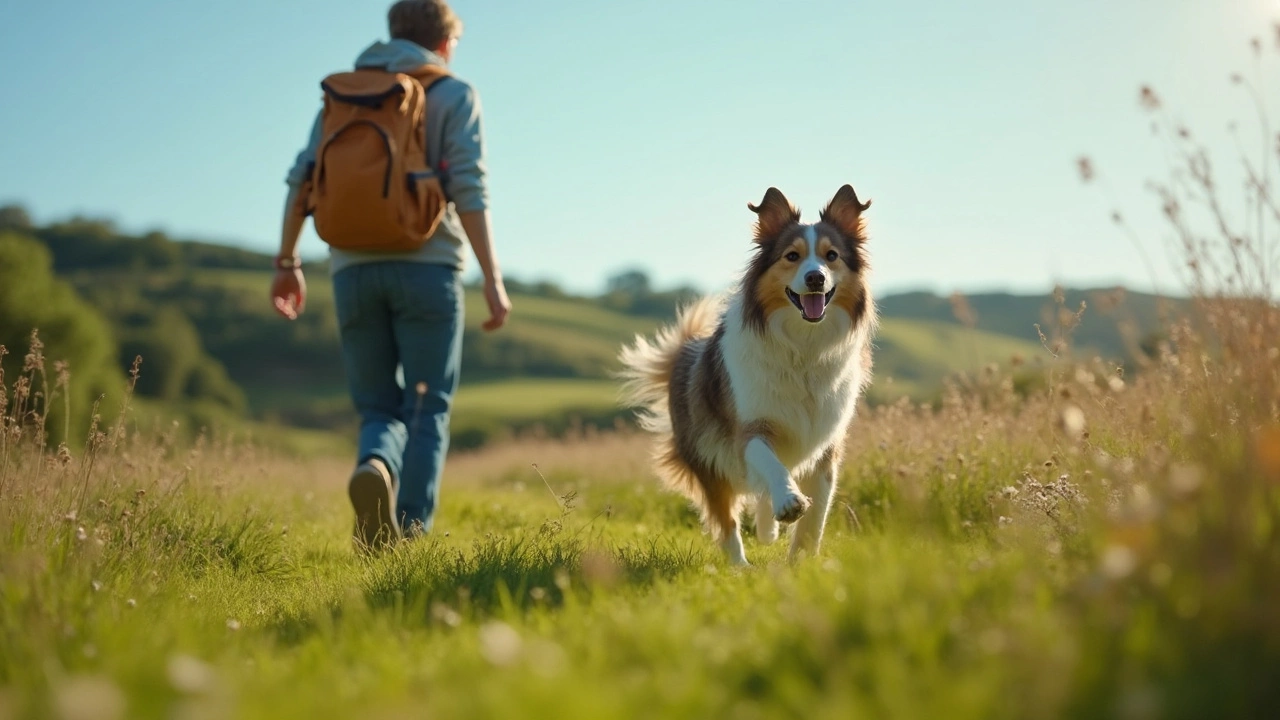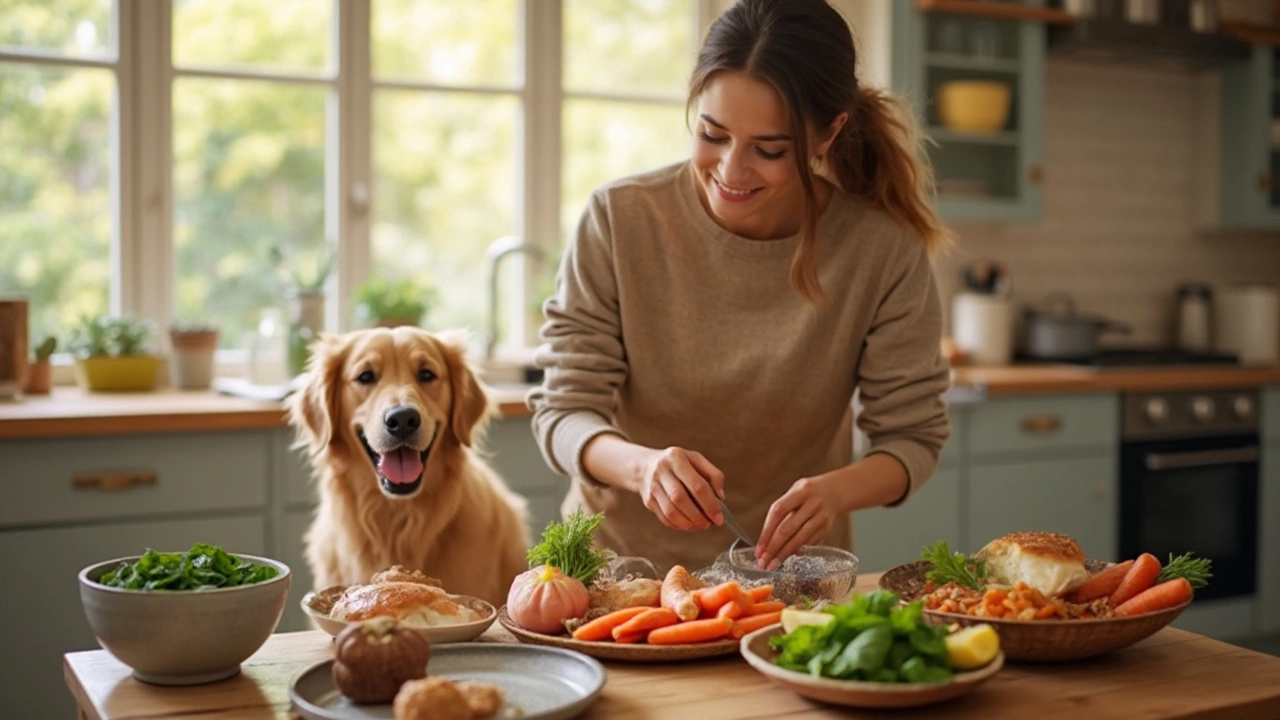Feeding your dog should be simple, right? Toss some kibble in a bowl and you're done. But nope, it's a bit more complicated than that, especially when you think about what vets say to steer clear of. Some dog foods out there have ingredients that might not agree with your furry buddy or even do harm in the long run.
Before you grab the next bag of food from the shelf, let’s chat about a few ingredients that might be on a vet's no-go list. These can include things like artificial preservatives and certain fillers. You wouldn’t eat junk, so why should your pup?
With labels that seem to be in a secret code, it’s tough to know what’s really in that bag. But don’t worry, understanding what’s in your dog’s food and what to avoid isn’t as daunting as it seems. Let’s break it down, so you can make sure your four-legged family member is getting the nutrition they deserve.
- Controversial Ingredients in Dog Food
- The Hype About Grain-Free Diets
- Additives and Fillers to Avoid
- Understanding the Label: What to Look For
- How to Choose the Right Diet for Your Dog
Controversial Ingredients in Dog Food
When it comes to picking the right dog food, it's not just about choosing a brand that sounds fancy. Many vets often point out certain ingredients that can be troublesome in the long run. You know, the kind of stuff that might be sneaking into your pup's diet without you even realizing it.
One big red flag is artificial preservatives. You're probably familiar with names like BHA, BHT, and ethoxyquin. These are often used to extend the shelf life of pet foods but aren't exactly the best for your furry pal's health. Some suggest they could negatively affect your pet’s long-term wellbeing. It seems easier, and safer, to stick with natural preservatives, such as vitamin E (known as mixed tocopherols) or vitamin C.
Then there's the issue of meat by-products. These can essentially be any part of the animal not typically consumed by humans—think feet, brains, or even undeveloped eggs. While not inherently bad for dogs unless contaminated, many owners prefer a diet with actual meat rather than leftovers.
And have you heard about those mystery 'animal digest' and 'animal fat' ingredients? If you see these labels, you may want to dig a bit deeper into what they include since their sources are not always clear, leading to potential allergies or sensitivities in some dogs.
- Grains: While not always an issue, some dogs have grain allergies. Other pups handle grains just fine, so it's generally about knowing your dog.
- Sweeteners: Ingredients like corn syrup or other sugar forms can lead to weight gain, just like in humans, and contribute to health issues over time.
It sounds a bit like a minefield, but reading labels carefully can help you avoid these controversial ingredients. Next time you're shopping, aim for options that clearly list meats as primary ingredients and keep those pesky additives to a minimum. Your pup might not be able to say thanks, but their wagging tail will surely do the trick!
The Hype About Grain-Free Diets
Grain-free dog food has been the talk of the town for quite some time now, but is it really the best option for your pooch? You might have come across claims that these diets mimic what dogs' ancestors ate. Yet, did you know that this trend started more because of marketing than science?
According to Dr. Jennifer Larsen, a clinical nutritionist at UC Davis, "Not all dogs benefit from a grain-free diet," she warns.
“We often find that these diets aren’t yielding the health benefits for dogs that people expect," says Dr. Larsen.
Grains like rice and barley provide essential nutrients that can be perfectly fine for most dogs. The issue with grain-free diets is sometimes they're linked to canine heart disease. The FDA has even looked into these diets to see if there's a connection.
Worried you might be accidentally harming your pup? Here are a few points to consider:
- Dog food with grains isn't inherently bad. Many dogs digest grains perfectly well.
- The lack of grains means these foods often have more peas, lentils, and potatoes, which isn’t always a better choice.
- Check labels for vets-recommended formulations or ask your vet directly what’s best for your dog.
So, while grain-free might sound trendy, it's not a one-size-fits-all solution. Understanding what's actually in your dog’s kibble can make a world of difference to their health and happiness.

Additives and Fillers to Avoid
So, what exactly should you be on the lookout for when picking out dog food? There are a few common additives and fillers that experts say should be avoided.
First up, artificial preservatives like BHA, BHT, and ethoxyquin. These are used to extend the shelf life of food, but some studies suggest they might have links to health issues. It’s worth noting that these ingredients are banned or limited in human foods in some countries.
Dr. Karen Becker, a well-known vet, mentions, "Choosing a food without artificial preservatives can be a simple and effective step in supporting your pet’s long-term health."
Next, let’s talk about fillers. These are the things that boost the bulk of food without adding much nutritional value. Corn and soy are prime examples. While these are not inherently harmful, they aren't the best source of nourishment for your pup. Cheaper dog foods often have these as the main ingredients to cut costs.
Another sneaky one is artificial colors and flavors. They make the food look and taste better to us, but dogs care more about the smell. Plus, these additives can be triggers for allergies or stomach upsets.
In a nutshell, check the label carefully. If ingredients like meat meals and by-products top the list, that’s another red flag. These lower-quality proteins might not give your dog the protein punch they really need.
- Avoid artificial preservatives like BHA, BHT, and ethoxyquin.
- Look out for common fillers such as corn and soy.
- Steer clear of artificial colors and flavors.
- Avoid foods where meat by-products make up the main ingredient.
It might sound a bit overwhelming, but once you know what to avoid, choosing the right dog food becomes a lot easier. Your pup’s health deserves it.
Understanding the Label: What to Look For
Ever felt like you're trying to crack a secret code when looking at a dog food label? You're not alone. Deciphering what’s in your pup’s food is like navigating a supermarket with everything labeled in ancient Greek. But fear not—it's simpler than it looks once you know what to spot!
First up, check the ingredient list. Ingredients are listed by weight—and that means what’s most plentiful is up top. Ideally, you want to see a good source of protein, like chicken or beef, right there in the first spot. But if you see “by-product” or “meal” tagged along with those proteins, it might raise an eyebrow. It doesn't mean it’s bad, but sometimes they aren't the top-notch cuts.
Next, beware of fillers. Some dog food brands pack their bags with stuff like corn and soy. They're not necessarily harmful, but they’re often used to bump up volume cheaply, rather than giving your pet quality nutrition.
Also, when you spot words like 'natural flavors' or 'artificial preservatives'—keep a skeptical eye. Natural doesn’t always mean healthy, and artificial anything tends to mean chemicals. Look for antioxidants like vitamin C or E, which are safer preservatives.
- Main Ingredient: Look for real meat or fish.
- Grains: Watch out for too much corn or soy.
- Preservatives: Prefer vitamins over artificial chemicals.
Lastly, labels might sometimes include words like 'premium' or 'gourmet.' But don’t be fooled. These marketing ploys don’t always mean better quality. The more you get used to reading these labels, the easier it'll be to ignore the fluff and focus on the stuff that counts.

How to Choose the Right Diet for Your Dog
Picking the right dog food can feel a bit like playing food detective. But no worries, I've got your back! First things first, you gotta consider your pup’s age, size, and activity level. Puppies need more calories and nutrients because they're little bundles of energy, while older dogs might need fewer calories but more fiber.
The next step is checking out the food label. The ingredients list can be long and confusing, but here’s a simple rule of thumb: the first three or four items should be recognizable meats or fish, not by-products. If 'chicken meal' freaks you out, relax—it's basically ground-up chicken without feathers and all that jazz, and it's packed with protein!
Don’t forget about your pup's personal needs. If your dog has allergies, you'll want to find a food that skips those triggers. Also, consider the debate over grain-free diets. Some dogs do fine on grains like brown rice and barley, whereas others might thrive without them.
- Consult the vet: Always your best bet for tailored advice. They can consider your dog's unique health needs.
- Mix it up: If you’re not sure about something, start with smaller bags. Mixing different proteins and brands might help find the perfect fit without commitment.
- Watch for changes: When switching foods, watch for any changes in your dog’s behavior or stool. It sounds gross, but their poop can tell you a lot about their health!
For those of you who love numbers, let's look at some handy stats. Did you know that around 30% of dogs have some kind of food intolerance? No joke! So, being picky about what goes in their bowl is more important than you might think.
At the end of the day, you want your furry family member to be happy, healthy, and full of energy. By paying attention to their diet, you're setting them up for a long and wag-filled life.





